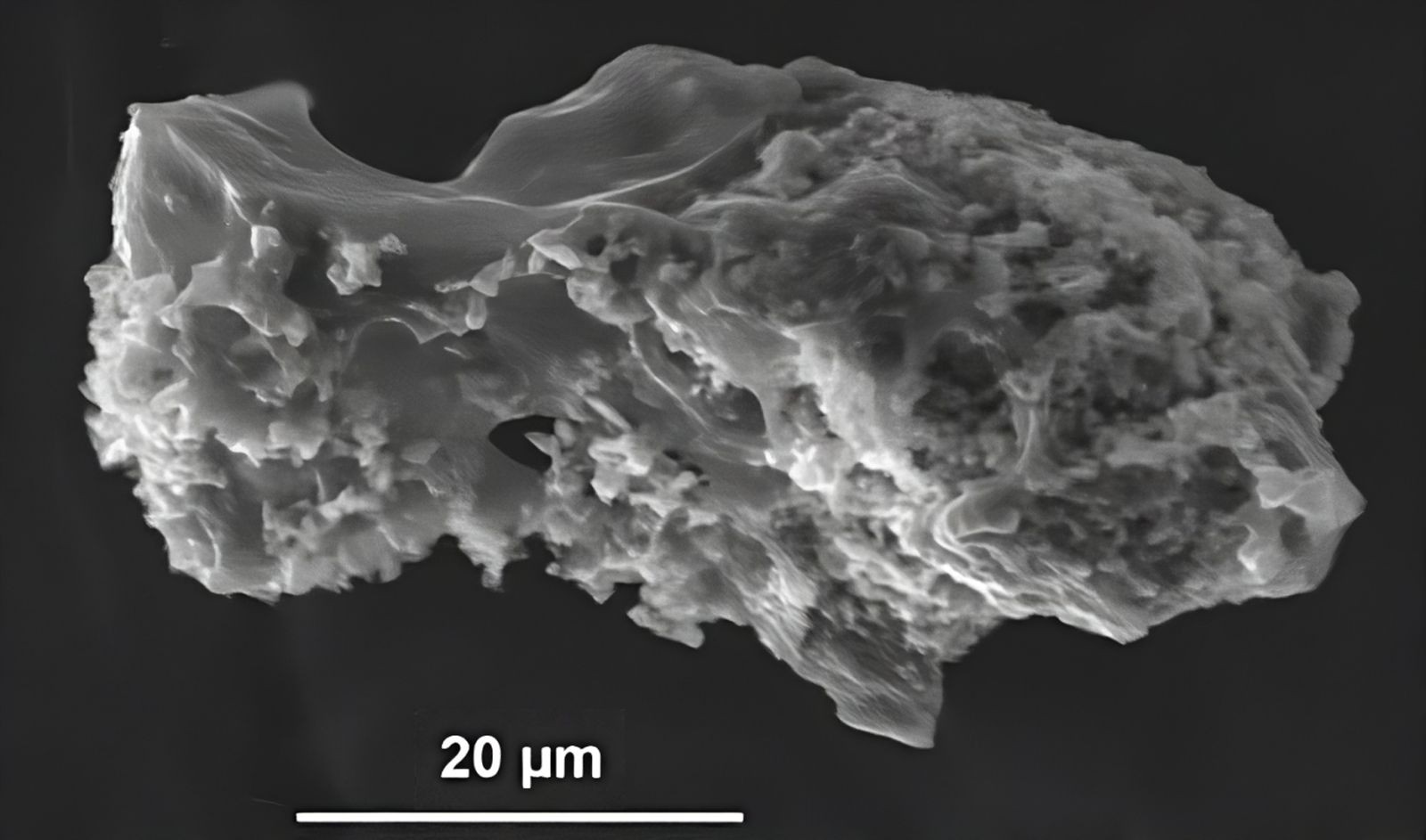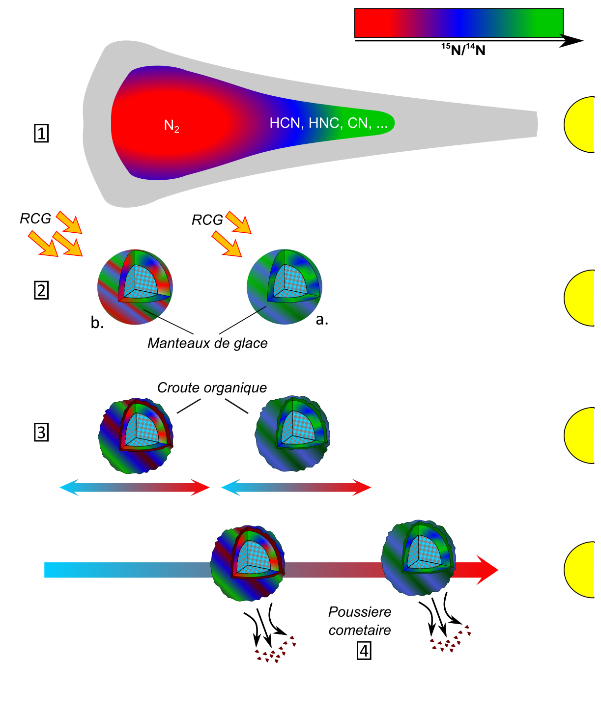Follow us on Google News (click on ☆)
Comets are the most distant objects tied to our star, the Sun. Studying them, along with asteroids, offers insights into the astrophysical context of the solar system's formation and its early evolution.

Ultra-carbonaceous micrometeorite (scanning electron microscopy image, 20 µm = 0.02 millimeters). The visible organic matter on the upper part of the particle was likely formed on the surface of a comet during irradiation of ices by galactic cosmic radiation.
Since in-situ study is difficult and the number of missions achieving this feat too few to provide a comprehensive view of their composition, the study of meteorites and micrometeorites remains, to this day, an essential method for understanding the history of the solar system.
However, while the vast majority of meteorites come from asteroids, micrometeorites—extraterrestrial dust particles ranging from a few tens to hundreds of micrometers in size—are predominantly of cometary origin. They originate from farther and colder regions than those where asteroids orbit, thus serving as a geochemical marker in their own right.
Expeditions conducted by scientists from the Irène Joliot Curie Physics Laboratory of the Two Infinities (IJCLab) for nearly two decades at Dome C, located near the French-Italian scientific base Concordia in central Antarctica, with support from the French Polar Institute Paul-Émile Victor (IPEV), have enabled the gathering of a unique collection of extraterrestrial dust particles.
Some of these particles exhibit exceptionally high concentrations of carbon, known as Ultra-Carbonaceous Antarctic Micro-Meteorites (UCAMMs).
A collaboration led by French CNRS researchers, alongside American scientists from the Carnegie Institution, Arizona State University, and the Naval Research Laboratory, conducted the first systematic study of the isotopic composition of light elements (hydrogen, carbon, nitrogen) within UCAMMs using secondary ion mass spectrometry. The analysis of the carbon component in UCAMMs reveals a mixture of organic materials with isotopic ratios significantly different from those observed on Earth.
The isotopic composition of nitrogen in one organic component of UCAMMs is comparable to that of the Sun, indicating that the organic matter in some UCAMMs formed from the primordial nitrogen (N2) reservoir of the solar system. Other organic components exhibit much higher 15N/14N ratios, similar to those observed in certain primitive meteorites or in interplanetary dust collected by NASA, indicating formation from secondary reservoirs that underwent isotopic fractionation processes in the protoplanetary disk.

(Top) Scenario of organic matter formation in cometary micrometeorites.
(1) Nitrogen-rich organic molecule reservoirs with distinct isotopic compositions coexist in the protoplanetary disk.
(2) These molecules condense as ice coatings on the surface of comets in outer regions (beyond Neptune). These ices are then irradiated by galactic cosmic rays (GCR).
(3) After the ice sublimates, a refractory organic residue (a crust) forms on the comet's surface.
(4) Upon entering the inner solar system, dust rich in organic matter (UCAMMs) is ejected from cometary surfaces.
A very small fraction of this dust may be captured by our planet and collected in the Antarctic snows.
The organic matter in UCAMMs most likely formed on the surface of comets during irradiation of nitrogen-rich ices by cosmic rays from our galaxy. The data obtained from this study help shed light on the isotopic composition of cometary ice mantles. Located in the Kuiper Belt or Oort Cloud, far beyond the orbits of the giant icy planets (Uranus and Neptune), comets are extremely difficult to reach, and information about them is limited.
Studying micrometeorites rich in organic matter therefore opens a new window for researching the composition of ices present on cometary surfaces. Their organic matter represents an exceptional archive of the volatile element reservoirs that condensed on the surface of the coldest objects in the solar system. These results are published in the journal Nature Astronomy.
References:
Nitrogen organics from comets probed by ultra-carbonaceous Antarctic micrometeorites,
Nature Astronomy, published on September 10, 2024.
Doi: 10.1038/s41550-024-02364-y